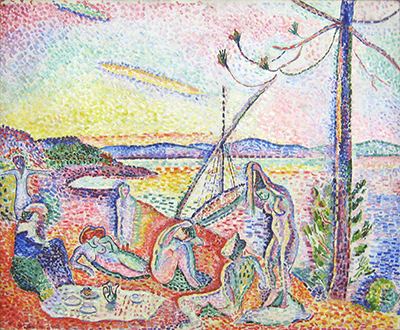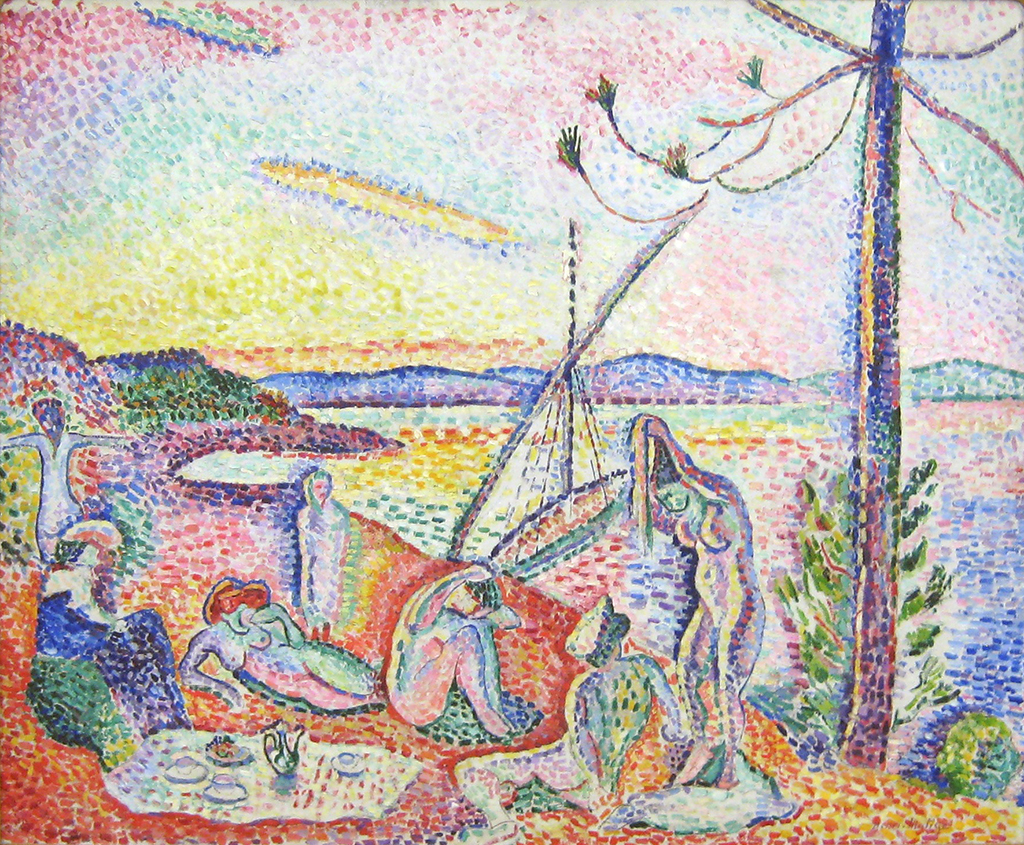Henri Matisse would only have been in his mid-thirties at the time that he produced the famous painting, Luxe, Calme et Volupte. It is considered by some to have been the first example of the Fauvist movement.
In front of us we find a landscape scene, with several figures relaxing on a bank which lines a calm sea. Luxe, Calme et Volupté translates as Luxury, Calm and Pleasure, and we can immediately pinpoint an atmosphere to match that within this painting. A tall, slim tree is placed on the right hand side which essentially serves to frame that part of the composition, whilst a set of rolling hills then make their way across the far background. The sky is relatively clear, with just a few clouds appearing but, crucially, it is the style of the painting, rather than the content, that make it so memorable and also significant within the realms of art history. There are so many comparisons that can be drawn between this painting and the work of a number of other famous French artists, but at the same time, the work was entirely unique for the year of its inception, which was 1904.
Matisse developed a technique at this point which involved carefully placed dashes throughout a scene in different tones of colour that up close would mean very little. When viewed from afar, however, the dashes would merge together into something that the brain could understand more easily, which in this case is a bright and positive landscape painting. We have all seen many bather paintings within French art, and it became one of the signatures of this region, but never before had it been seen using these techniques. The artist himself would make use of a variety of styles during his long career and was always looking to take each as far as he could, before then moving on with new ideas. The term Fauvism, that was used to describe this new approach refers as much to the colour scheme as it does the techniques of brush on the canvas.
This painting can be found in the collection of the Musée d'Orsay, Paris which is one of the finest art institutions in Europe. They impress with both quantity and also quality, with a key focus on French art, but with also a good coverage of notable artists from elsewhere. Bouguereau's The Birth of Venus, Caillebotte's The Floor Scrapers and Manet's Luncheon on the Grass are some of the memorable highlights to be found here, though the true list is far too long to go into here. Always check ahead if you are looking to see a specific piece up close, as sometimes the collection will be rotated, or items maybe also loaned out from time to time for exhibitions elsewhere. At the time of writing, it is believed that Luxe, Calme et Volupte is the only Matisse painting to be found here.





